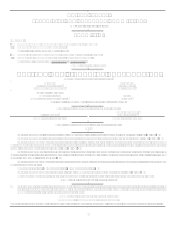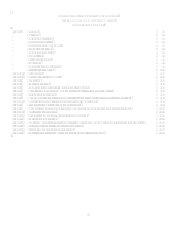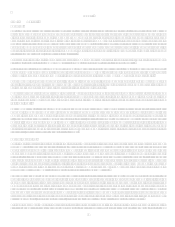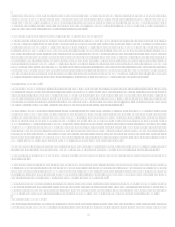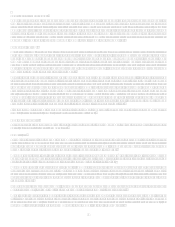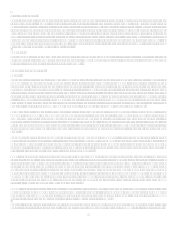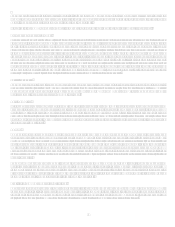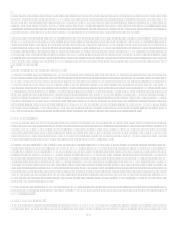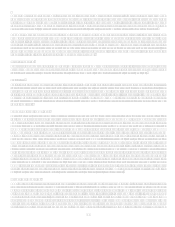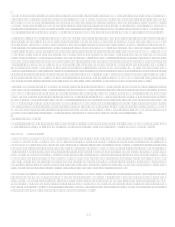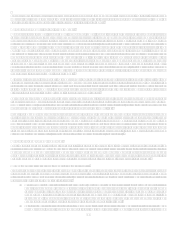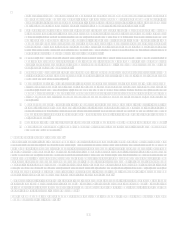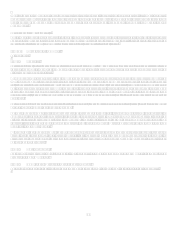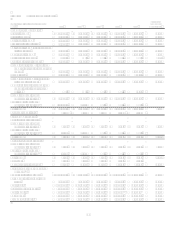Capital One 2007 Annual Report Download - page 32
Download and view the complete annual report
Please find page 32 of the 2007 Capital One annual report below. You can navigate through the pages in the report by either clicking on the pages listed below, or by using the keyword search tool below to find specific information within the annual report.10
Subprime Lending Guidelines
On January 31, 2001, the federal banking agencies issued Expanded Guidance for Subprime Lending Programs (the Guidelines).
The Guidelines, while not constituting a formal regulation, provide guidance to the federal bank examiners regarding the adequacy of
capital and loan loss reserves held by insured depository institutions engaged in subprime lending. The Guidelines adopted a broad
definition of subprime loans which likely covers more than one-third of all consumers in the United States. Because our business
strategy is to provide credit card products and other consumer loans to a wide range of consumers, we believe that a portion of our
loan assets are viewed by the examiners as subprime. Thus, under the Guidelines, bank examiners could require COB to hold
additional capital (from one and one-half to three times the minimally required level of capital, as set forth in the Guidelines), or
additional loan loss reserves, against such assets. As described above, as of December 31, 2007 COB met the requirements for a
well-capitalized institution. Federal examiners, however, have wide discretion as to how to apply the Guidelines and there can be no
assurances that COB or CONA may not be required to hold additional regulatory capital against such assets.
For purposes of the Guidelines, we treat as subprime all loans in COBs programs that are targeted at customers either with a Fair,
Isaac and Company (FICO) score of 660 or below or with no FICO score. COB holds on average 200% of the total risk-based
capital requirement that would otherwise apply to such assets.
FFIEC Account Management Guidance
On January 8, 2003, the Federal Financial Institutions Examination Council (FFIEC) released Account Management and Loss
Allowance Guidance (the Guidance). The Guidance applies to all credit lending of regulated financial institutions and generally
requires that banks properly manage several elements of their lending programs, including line assignments, over-limit practices,
minimum payment and negative amortization, workout and settlement programs, and the accounting methodology used for various
assets and income items related to loans.
We believe that our account management and loss allowance practices are prudent and appropriate and, therefore, consistent with the
Guidance. We caution, however, that similar to the subprime Guidelines, the Guidance provides wide discretion to bank regulatory
agencies in the application of the Guidance to any particular institution and its account management and loss allowance practices.
Accordingly, under the Guidance, bank examiners could require changes in our account management or loss allowance practices in the
future, and such changes could have an adverse impact on our financial condition or results of operation.
Upon conversion of COB to a national association, COB will implement the OCCs minimum payment requirements over the course
of this year, which will require COB to utilize a new formula to calculate minimum payment amounts for its credit card customer
base. The new formula will increase minimum payment amounts under some circumstances, which could result in an increase in
delinquencies and defaults, as well as an increase in the allowance for loan losses, for COBs credit card portfolio. In addition, the new
requirements may adversely impact fee revenue.
Regulation of Lending Activities
The activities of the Banks as consumer lenders also are subject to regulation under various federal laws, including the Truth-in-
Lending Act, the Equal Credit Opportunity Act, the Fair Credit Reporting Act (the FCRA), the Community Reinvestment Act and
the Service members Civil Relief Act, as well as under various state laws. Depending on the underlying issue and applicable law,
regulators are often authorized to impose penalties for violations of these statutes and, in certain cases, to order the Banks to
compensate injured borrowers. Borrowers may also have a private right of action to bring actions for certain violations. Federal
bankruptcy and state debtor relief and collection laws also affect the ability of the Banks to collect outstanding balances owed by
borrowers. These laws plus state sales finance laws also affect the ability of our automobile financing business to collect outstanding
balances. In May 2007, the Federal Reserve issued proposed rules under the Truth-in-Lending Act; there can be no assurance that such
regulations, when final, will not have an adverse impact on us.
Privacy and Fair Credit Reporting
The Gramm-Leach-Bliley Act (GLBA) requires a financial institution to describe in a privacy notice certain of its privacy and data
collection practices and requires that customers or consumers, before their nonpublic personal information is shared with nonaffiliated
third parties, be given a choice (through an opt-out notice) to limit the sharing of such information about them with nonaffiliated third
persons unless the sharing is required or permitted under the GLBA as implemented. The Corporation and the Banks have written
privacy notices that are available through the web site of the Corporation, the relevant legal entity, or both, and are delivered to
consumers and customers when required under the GLBA. In accordance with the privacy notices noted above, the Corporation and
the Banks protect the security of information about their customers, educate their employees about the importance of protecting
customer privacy, and allow their customers to remove their names from the solicitation lists they use and share with others to the
extent they use or share such lists. The Corporation and the Banks require business partners with whom they share such information to
have adequate security safeguards and to abide by the redisclosure and reuse provisions of the GLBA. To the extent that the GLBA
and the FCRA require the Corporation or one or more of the Banks to provide customers and consumers the opportunity to opt out of



